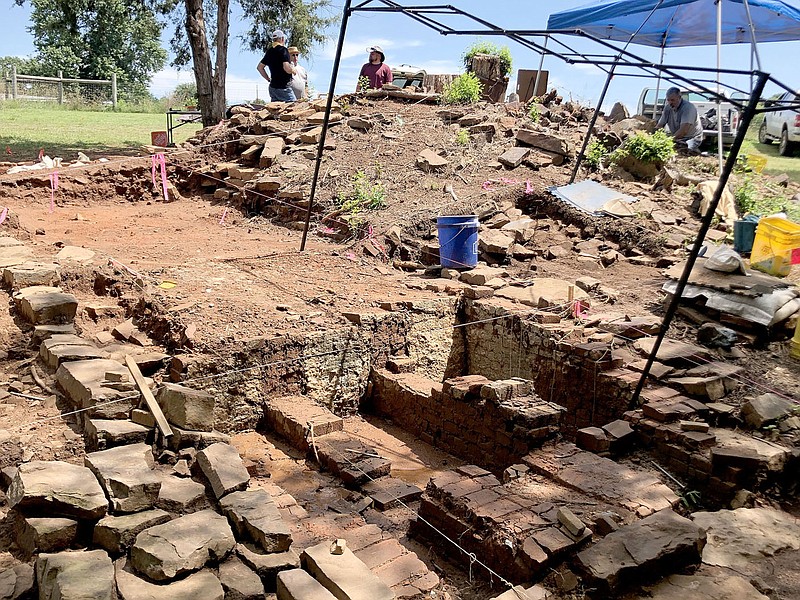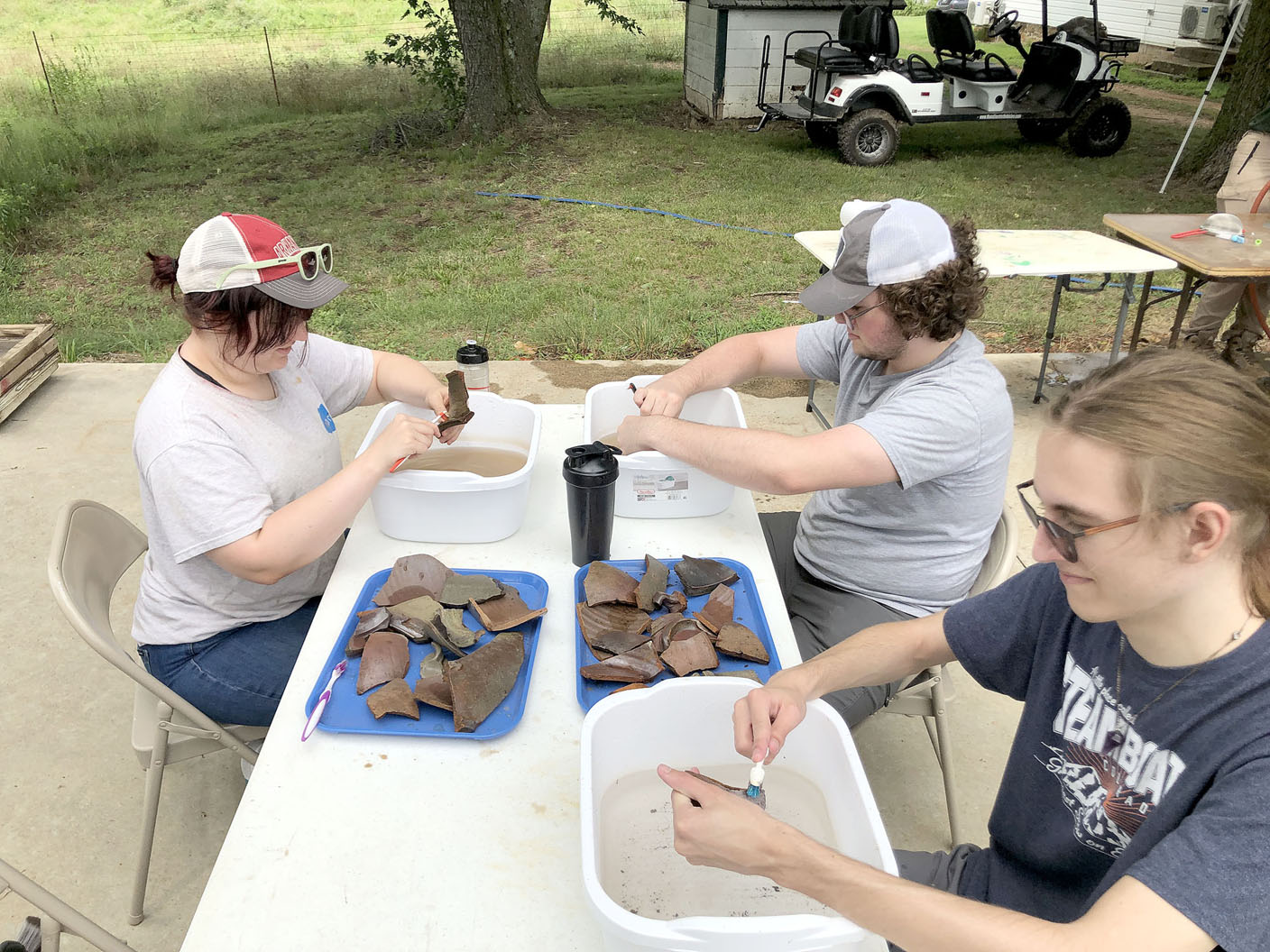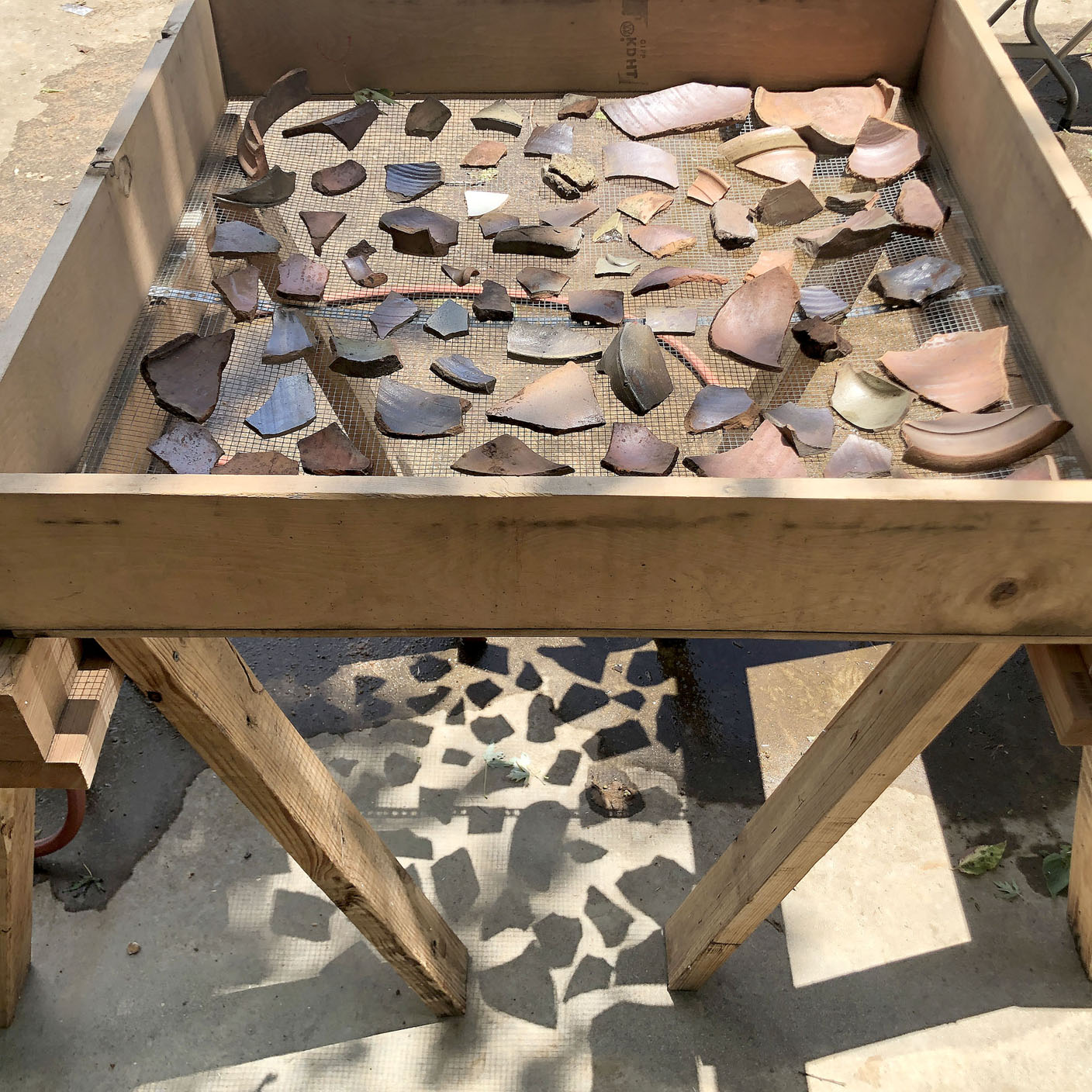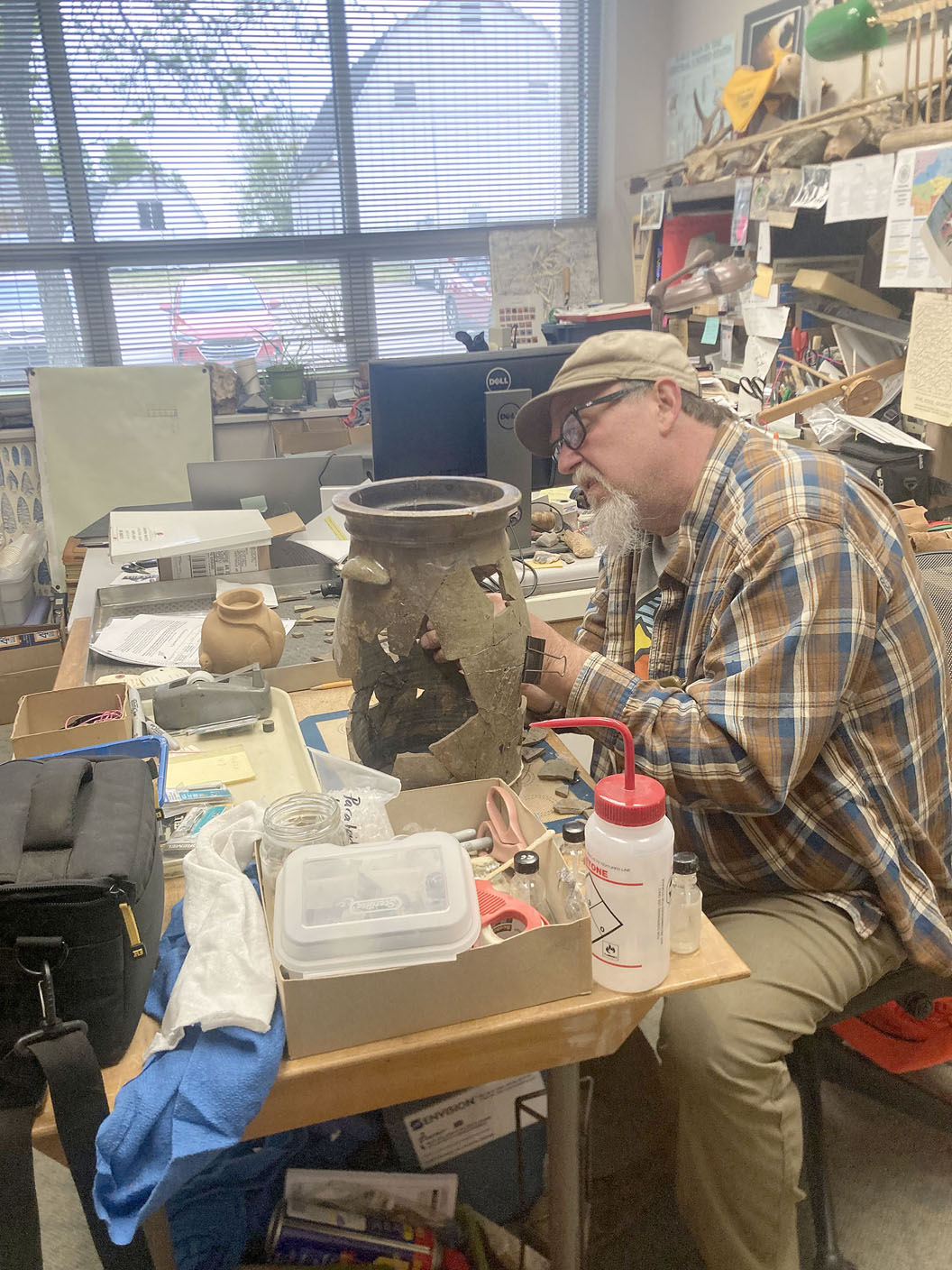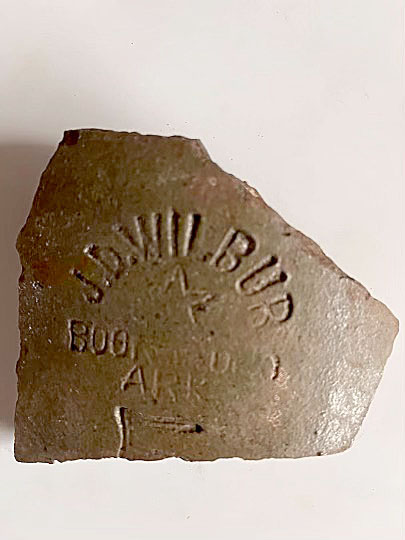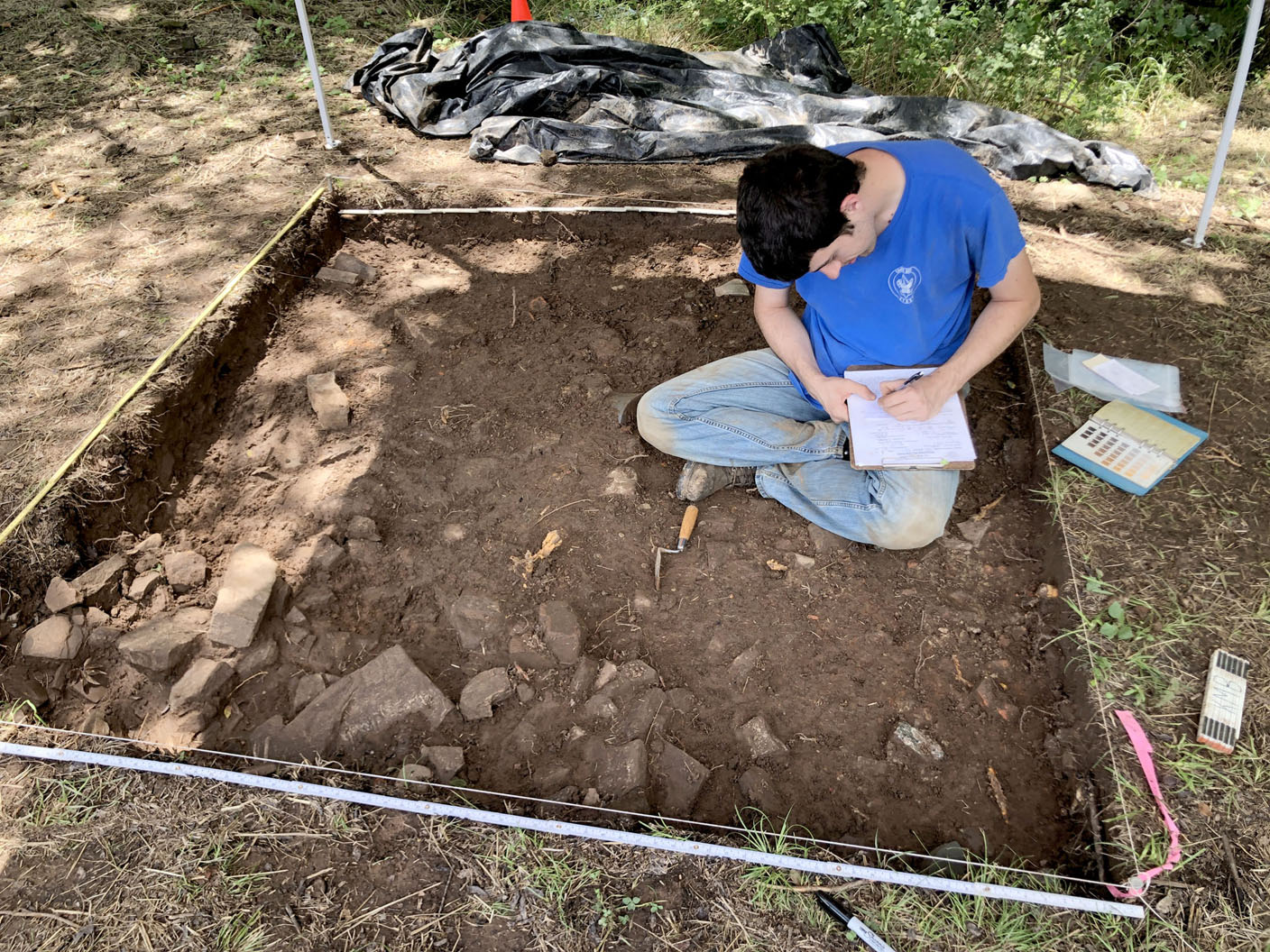CANE HILL -- The irony of an archeological dig at James Donohoe (J.D.) Wilbur's mid- to late-19th century pottery production site just outside Cane Hill is Wilbur himself dug out local clays to make his utilitarian stoneware.
Wilbur, who lived from 1833 to 1889, might wonder why anyone would find what he did interesting enough to get dirty over it.
But get dirty they have.
An open house held July 15 showcased findings and shined a light on Wilbur's work. His pieces, without decoration other than a maker's stamp, embody "a principle of design associated with late 19th and early 20th century architecture and industrial design" that "form follows function" (Wikipedia).
Simple, yet elegant pottery
Wilbur's designs and shapes, simple yet elegant, typical of stoneware potters of his time, incorporate only what was needed. They feature sturdy containers with strong handles or grips and with rim, mouth and neck designs that allowed for tight sealing or clean pouring.
Experienced archeologists Mike Evans and Jared Pebworth along with historian and artist Lawrence McElroy served as tour guides for the open house and talked about the site like kids showing off a secret fort. Their animated faces, deep knowledge and friendly commentary brought the site to life. They shared the discoveries that have been made so far and what that information may confirm or teach them. They were also upfront about what they still don't know or understand.
The three guided nearly 100 people around the Wilbur site under a partly sunny sky from 9:30 a.m. until after 1 p.m. Attendees included parents with closely supervised children, grandparents, retirees, couples, individuals and clusters of friends, some from Oklahoma, some from Missouri, many from Arkansas. All walked carefully around excavation pits and areas outlined by stakes and string.
McElroy said the clay for the stoneware came from Wilbur's property, from nearby Jordan Creek and probably from other local sources. That ready resource gave Wilbur the means to make a living providing the types of containers everyone needed at that time. McElroy said sherds of Wilbur's stoneware have been found in other local historic sites, including historically black communities.
He said Wilbur and his ilk were for their times what plastic container makers are for today's. Glass and tin containers weren't yet readily or massively available or easily transported.
An area of the site archeologists hoped to confirm is where the pug mill was located. This featured a turnstile, powered by a mule tethered to it and plodding in a circle, wherein the clay was ground, sifted, and mixed.
A slice of paradise
Besides readily available clay, Wilbur's operation featured an on-site, spring-fed creek and waterfall that provided plentiful and continuous water for working the clay, a temperate bluff shelter for storage, and plentiful timber to feed the kiln fire box. In fact, a full circle viewing of these still-evident resources shows that Wilbur worked in a slice of paradise.
McElroy, director of arts and culture and art curator for Historic Cane Hill, said Wilbur made stoneware jugs, pitchers, crocks, pots, bowls, churns and, most interestingly, containers suitable for food preservation with wax seals, essentially stoneware canning jars. Wilbur also produced clay pipes for drainage, short pieces that could fit together for a course or run. He said no evidence has been found so far to show Wilbur produced any type of tableware such as plates and cups.
Records show Wilbur produced his stoneware, with his distinctive thumbprints at the base of handles, between 1868 to 1889. At that time, Cane Hill was called Boonsboro, a name found stamped into the pieces along with J.D. Wilbur's name or, early on, the names J.M. Roark & J.D. Wilbur.
James Michael Roark, of Denton, Texas, was probably an initial partner with Wilbur when Wilbur moved to Boonsboro from Denton in 1867.
Station Assistants Pebworth and Evans, from the Arkansas Archeological Survey's University of Arkansas-Fayetteville Archeological Research Station, said they are interested in historic archaeology and for the past few years, on their own time, had been exploring the site in cooperation with McElroy and HCH.
Dr. Jessica Kowalski, station archeologist of UAF Archeological Research Station, held this year's summer Field School class at the site. Thirteen students, six volunteers and six staff members have uncovered and recorded two kilns, suspected pottery wheel stands and evidence of a large open-sided structure that covered the entire operation, including the kilns. They've unearthed hundreds upon hundreds of pottery sherds along with other historic artifacts. An early discovery of one unbroken vessel found in the groundhog kiln (Kiln #1) fueled excitement, but so far, it is the only unbroken one.
Those kilns were hot beds, literally, built to reach the required temperature of 2,300 degrees for clay particles to vitrify and solidify into watertight vessels.
Like many southern potters, Wilbur used salt to create what's called an orange-peel textured, glossy glaze on his pieces, which, while not required for the stoneware to hold liquids, further enhanced their imperviousness.
No need to advertise
McElroy said evidence shows Wilbur sold his stoneware only locally, possibly within a roughly 30-mile radius. He said he found one advertisement, date not provided, for "J.D. Wilbur's Boonsboro stoneware" in the Fayetteville newspaper, but no other has popped up in his research.
It appears Wilbur didn't need to advertise. The need for what he made was great, and he made as much as he could to satisfy that need. McElroy said records are scarce for that time period, but one shows Wilbur declaring he made "10,000 gallons this year."
In Wilbur's time, production was measured in gallons instead of pieces or units. For instance, some churns were three gallons, some two. Storage containers might hold five gallons, pitchers a half gallon.
Evans said a full cycle of kiln loading, firing and cooling likely took about one week. If Wilbur produced year-round, minus two weeks for other matters, let's say, then he may have produced about 200 gallons a week. If the average piece held three gallons, that's nearly 70 pieces a week turned and built by hand.
In a PowerPoint presentation McElroy created to accompany his 2019 HCH exhibit titled "Men of Earth: 19th century potters of northwest Arkansas," he wrote that stoneware "could be produced cheaply and in great numbers by an individual potter working in a small shop."
With a shake of his head, he said, "It was hard, hard work."
McElroy said HCH has the largest collection of Wilbur stoneware, 13 pieces, which are on display in the museum, and Historic Arkansas in Little Rock has nine.
Although the open house won't be repeated, those who would like more information, can contact Historic Cane Hill at 479-824-4455 or email [email protected].
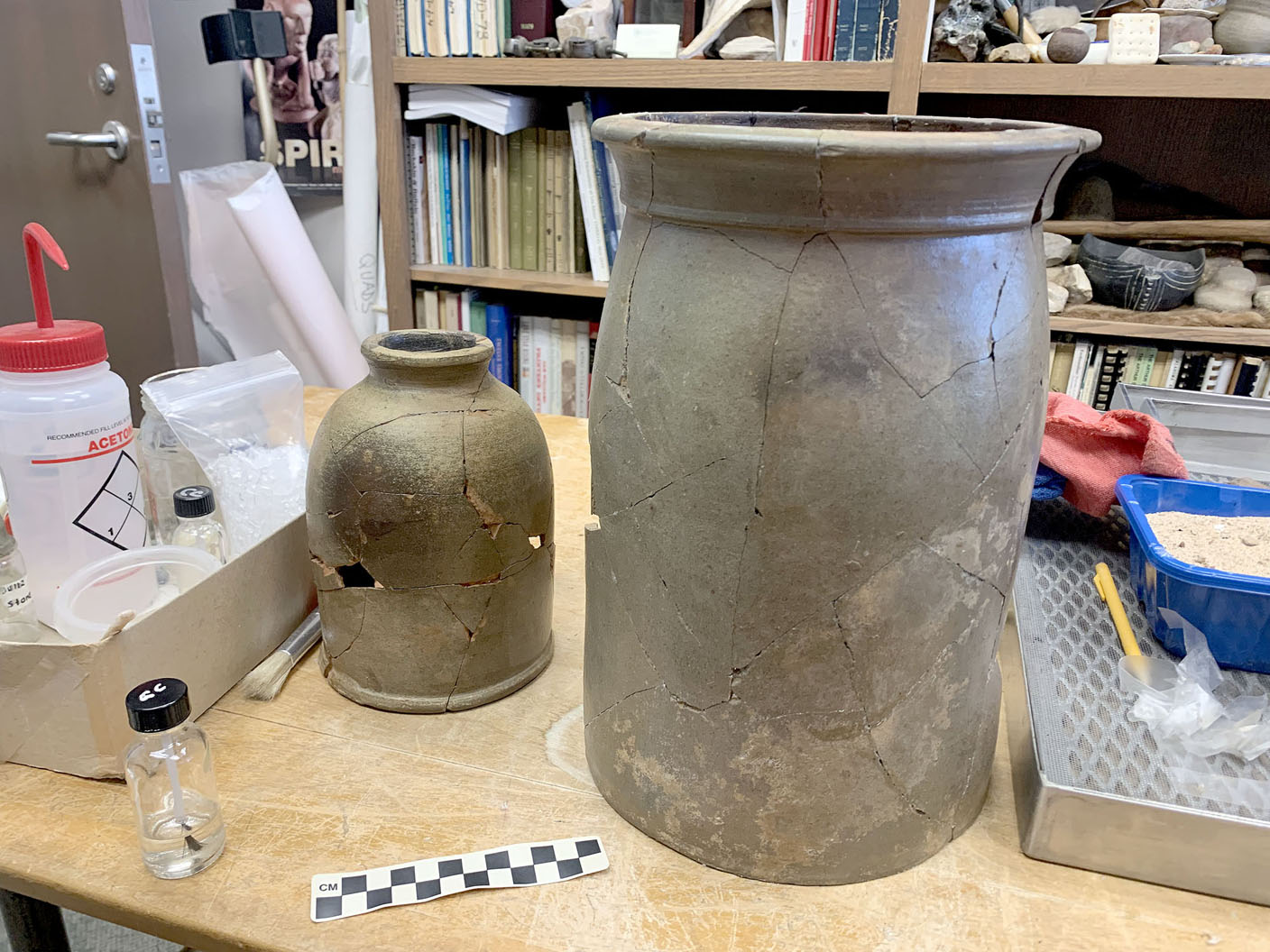 Courtesy photo J. D. Wilbur produced these stoneware pottery pieces on his property located just outside Cane Hill sometime between 1868 to 1889. They were pieced together by Station Assistant Jared Pebworth from sherds found in a recent archeological dig at the site conducted as part of the University of Arkansas-Fayetteville Archaeological Field School, led by Dr. Jessica Kowalski.
Courtesy photo J. D. Wilbur produced these stoneware pottery pieces on his property located just outside Cane Hill sometime between 1868 to 1889. They were pieced together by Station Assistant Jared Pebworth from sherds found in a recent archeological dig at the site conducted as part of the University of Arkansas-Fayetteville Archaeological Field School, led by Dr. Jessica Kowalski.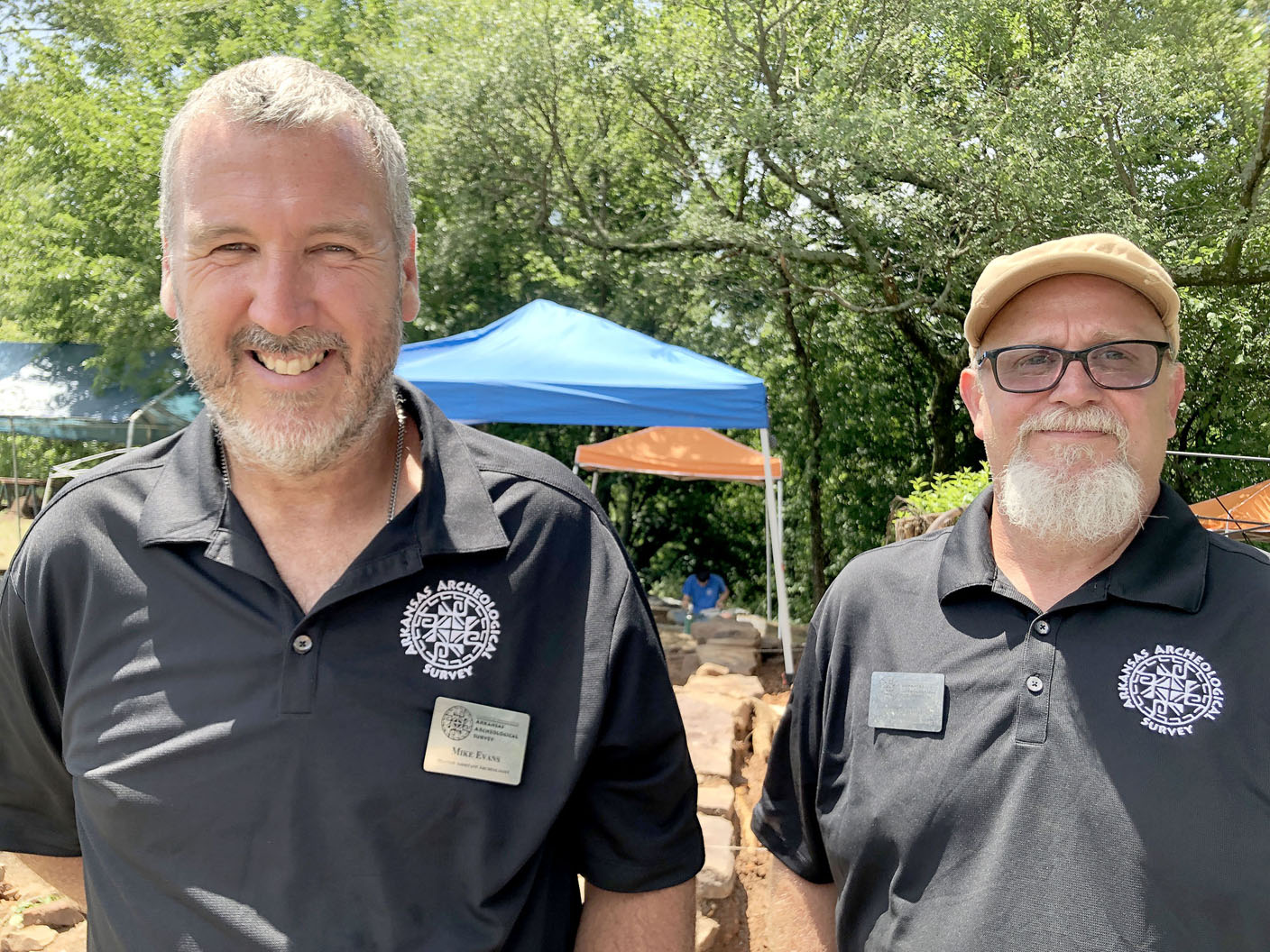 Denise Nemec Special to Enterprise-Leader Archeologists Mike Evans (on left) and Jared Pebworth, both station assistants with Arkansas Archeological Surveys University of Arkansas-Fayetteville Archeological Research Station, have worked on a dig of a 19-century pottery production site just outside Cane Hill.
Denise Nemec Special to Enterprise-Leader Archeologists Mike Evans (on left) and Jared Pebworth, both station assistants with Arkansas Archeological Surveys University of Arkansas-Fayetteville Archeological Research Station, have worked on a dig of a 19-century pottery production site just outside Cane Hill.
